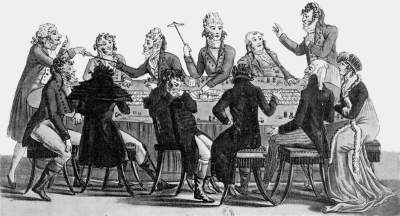History of Roulette

Roulette is one of the most iconic casino games ever. It’s been around for over 200 years and even longer than that in more undeveloped forms.
What exactly is the history of roulette, and how did the game develop? It’s evolved through the centuries from its humble beginnings as a simple spinning invention to a globally popular and virtual gaming giant that can be played anywhere and at anytime. You only have to look at some of the words that have developed in our roulette terms section to understand the history behind the game.
Interesting Roulette Fact….
Early French wheels had 2 zero pockets – 2 spaces reserved for the bank. Later in Europe, they took one zero out and to this day single zero wheels are called European Roulette wheels. In the US, they kept the extra zero for the bank, and today double zero wheels are called American Roulette. But they are really the original European Roulette.
French inventor Blaise Pascal came up with the concept of the cylinder that the modern roulette wheel is based on way back in the 17th Century. He was looking to create a device that worked purely on perpetual motion. A method in which to get the wheel spinning in an infinite state without any outside influence.
Once this project was finally abandoned it took over a Century for it to be picked up once more and modified into the recognisable wheel that we have all become accustomed to. Although he didn’t invent the Perpetual Motion Machine, he unleashed something almost as big. Can you imagine if he had patented the idea? The Pascal family would have been laughing if every casino in the world had to pay a few cents a spin on every roulette wheel the had.
Although an exact date is difficult to pinpoint, Roulette most definitely has its origins in France. It’s spiritual home is Monaco and the Monte Carlo Casino. From Pascal’s work the actual game went through its most significant development during the mid-19th Century when the actual wheel was purposely redeveloped by French brothers Francois and Louis Blanc. The brothers introduced the red and black pockets numbered 1 to 36 as well as the familiar single green zero pocket, and the familiar layout of roulette bets.
The game quickly became popular across Europe and gained even more prominence due to the mysterious, and obviously unfounded, rumours that surrounded the game and one of its creators. This reported ‘deal with the devil’ lives on in roulette legend as involved Frenchman Francois Blanc apparently selling his soul in order to gain the true secrets of how to win at roulette. Of course the game itself also had been given the moniker “The Devil’s Game”, not just due to this classic old tale but because interestingly enough the 36 main numbers on the wheel all add up to 666, the Devil’s number.
When the game headed across the Atlantic to the United States of America it felt that the house deserved an even better edge. Therefore they redeveloped the wheel themselves in order to add in an extra pocket, a double zero green slot. This then allowed the house to gain a significant gain in their favour (5.2% versus 2.6%). This wheel and setup is what you’ll see if you play American Roulette with the classic, and still vastly more popular, styled-game with one zero what the majority of punters expereince as they play European Roulette.
FAQs Roulette History
-
Where did the green numbers come from?
The early roulette wheels in the casinos of Paris in the late 1790s had a red single zero and a black double zero. To make things clearer for punters, the zeros were coloured green in the 1800s.

